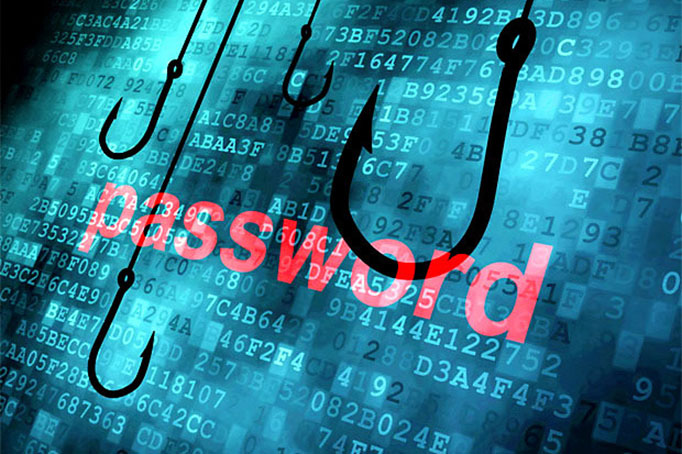Scams and scam artists have been going on for nearly as long as we’ve had a civilized society. This is nothing new. What is new are the methods that they use to employ their scams. In the past they have been given names based on the type of fraud they were running, Snake Oil Salesmen comes to mind. After that, there were the Ponzi schemers who would scam people by paying them back! So long as no one figured out what was going on, they would continue making money.
Today’s scam artists are much more sophisticated. These are people who will send you links through e-mail to sites you apparently should go to so that you will win something or update something that has “gone wrong.” The term that we use for these people are called Phishers, and they are the new scam artists.
I have seen some clever looking e-mails, and I continually find it astonishing how some are quite sophisticated and legit looking, while others I’m able to look at and wonder if they were trying. All teasing aside, the threat that these e-mails can pose is genuine and very dangerous. With people living more and more of their lives in the digital realm, the exposure to viruses and scams can be more and more threatening. With enough education, persistence, and vigilance, you can keep yourself educated on what is or and what is not likely a Phishing scam and how to avoid it. With that, I have a few tips for avoiding phishing;
1) Never (and I mean NEVER) click through the link – I can’t explain how much this action alone has caused millions of dollars lost because someone unsuspecting clicked through on a link in an email which caused a virus to wipe out or stealing their information. If you remember the Wanna-cry ransom-ware scandal in early 2017, people were clicking through on links which released a ransom-ware virus on their systems.
Ransom-ware Virus’ are awful because THEY password protect YOUR information and in order to get it back YOU need to pay THEM money! If that wasn’t enough, you have to pay BEFORE you get the key to unlock your info, so there’s no guarantee if you will be given the access after, or be held up for more money! This can all be avoided by NEVER clicking through on a link that you believe is suspect.
2) Always make sure that the e-mail is addressed to you – Something that these phishers do is write one e-mail that they can send to thousands or hundreds of thousands of people, they only need a few to click through to make their money. That being said there is no way for them to personalize their e-mails, so if you receive an e-mail addressed “To whom it may concern” or “to our most recent customer” or “our valued customer” they don’t mean you. If Steve gets an e-mail from someone claiming to be working for Steve’s best interest, but never mention Steve by name, you know whose interest they’re serving.
3) Always check for spelling and grammar – The internet is a lovely invention, it has connected people from all over the globe, sadly it has also meant that people can take their scams international. Sometimes you will get phishing e-mails from people who do not speak your language and thus cannot spell correctly in your language. If you are receiving a professional e-mail from someone who is misspelling things….yeah….that’s not who you think it is.
4) Read the sender e-mail address VERY carefully – Now we’re getting into the territory of the more clever phisher. I have seen very professional looking e-mails which are very well formatted, and usually they look very good, but the e-mail address of a scammer is NEVER the same as a legit source. I have seen many come from places like customerservice@esso.steve.com which if you looked quick you would think “huh, esso customer support @ esso.com…..must be legit right?”
WRONG Didn’t notice the “Steve” the first time around? Take another look; I can wait….saw it that time did you? This is a classic “looks close enough and if you’re not paying attention looks legit” type of scam. This scam preyed on people’s busy schedules and assumed that they would automatically click through and not pay attention. Always check to ensure that the e-mail address is legit.
5) Back-check any URL – For sure, sometimes these look VERY legit, I know that with some URL’s they can be a hundred characters long and those can be hard to keep straight. If you get sent a link, what I would do is go to the company website that the phisher is pretending to be. Assuming that a company (let’s call them Hotelcompany.com) is “sending you a sale” e-mail that has a link like www.hotelcompany.com/%promotion%of%a%20lifetime/ then go to hotelcompany.com’s website and see if they are having a sale. Typically if companies are e-mailing people about a deal of some verity, it will also be given prominent space on the website. If you don’t see a sale on the site, then the e-mail you got is bogus.
Phishing is a real danger, and it’s something that should be taken seriously in both your professional and personal life. It’s something that if you are persistent, educated and vigilant on, there is a MUCH smaller chance that you will get hacked. There are a few more tips and tricks that you can use to avoid phishing scams which I will be going through in next post.
Have you ever received a phishing e-mail?
Let me know in the comments section below. If you like this blog post and want to see more, you can follow me on Social Media (LinkedIn, Instagram, and Facebook @jasonlovefiles) or Subscribe to my blog to get new content delivered directly to your mailbox.

